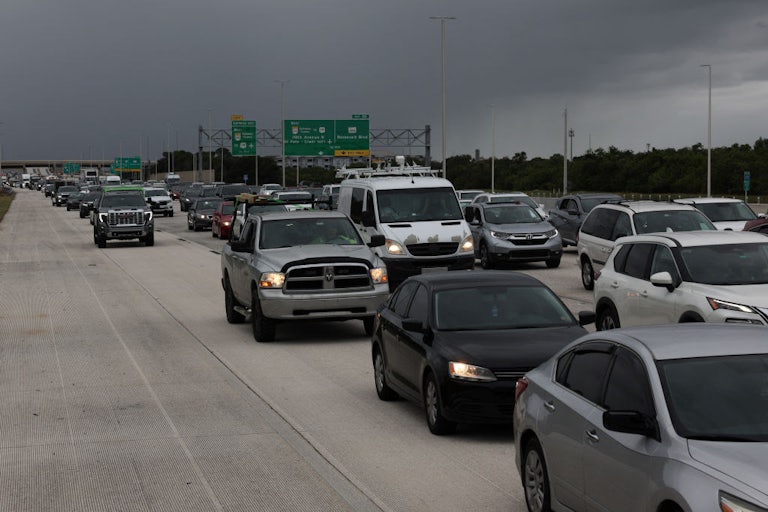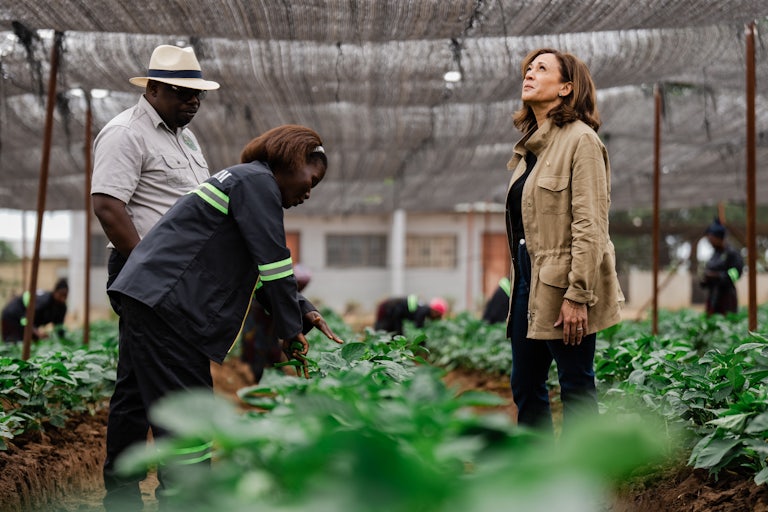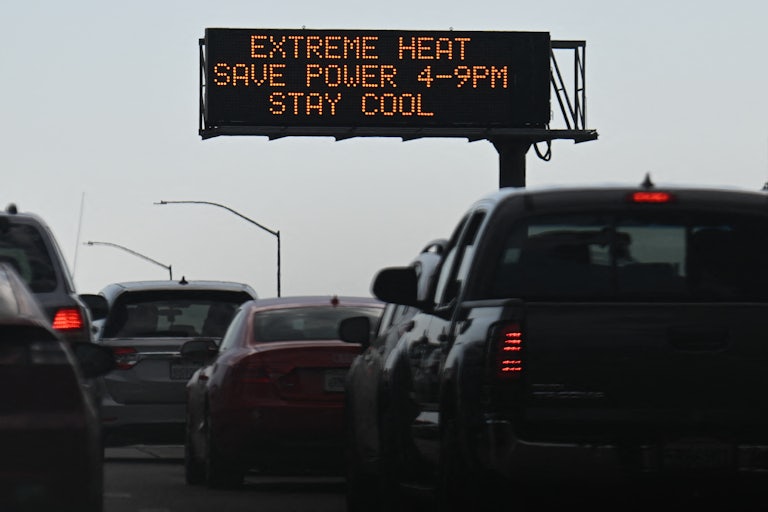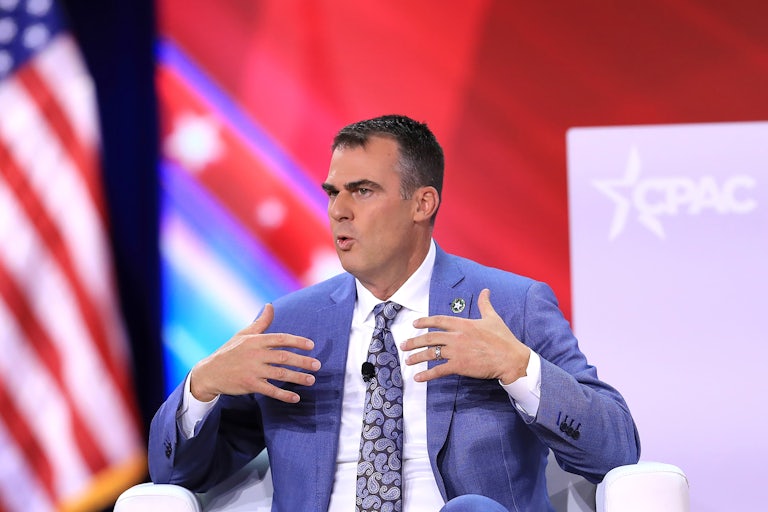Fleeing a Hurricane Is Expensive
People will be left behind as Florida evacuates for Hurricane Milton. Will their deaths count as “accidents”?

I’ve been thinking a lot, recently, about a piece Mariette Williams wrote for TNR four years ago. Williams recalled her first hurricane, as a college student, hunkering down with a handful of international students in their school’s dining hall in South Florida for three days with the power out. “We ate single-serve boxes of cereal and drank juice boxes—whatever nonperishables the dining hall had.” She didn’t remember the name of the storm. “What sticks out in my mind is what those who were able to leave as danger approached all had in common: money.”
Williams didn’t evacuate for hurricanes in her twenties, either, and neither did her friends: “We had just started making payments on our student loans and second-hand cars,” she wrote. “Leaving meant having a job flexible enough to give time off and either driving the eight-plus hours to the nearest state to book a hotel or buying airline tickets before prices tripled or quadrupled.” Her first evacuation came with Hurricane Maria in 2017: Both her and her husband’s work closed ahead of the storm, “We had a big enough window to plan our evacuation, and we could finally afford to leave.” The price tag was $1,500.
I thought about Williams’s piece as Hurricane Helene bore down on the Florida Panhandle, as reports emerged of the devastating floods in the Appalachians, and while reading reports that workers at a plastics plant in Tennessee were ordered to stay on the job as the floodwaters rose—with deadly consequences. And now of course there’s Hurricane Milton.
“Just watched an NBC meteorologist cry on air talking about how terrifying Hurricane Milton is,” the writer and communications expert Hannah Riley wrote in a tweet that quickly went viral Monday evening, “& then the next thing I saw was a woman in the evacuation zone saying she has literally nowhere to go—all the hotels are booked & she doesn’t have a lot of money & has 4 dogs/6 kids.” A woman matching that description—Amanda Moss, The Washington Post reported Tuesday night—has posted multiple videos to this effect on TikTok, noting that her seven-passenger car cannot fit nine people (her immediate family and her mother-in-law) and four dogs. (Even if she could, as early as Monday evacuees were reporting massive traffic jams and fuel shortages at gas stations along the route.) “Moss said she doesn’t have the money to pack her family on a flight, into multiple hotel rooms or into an Airbnb,” the Post reported.
This is not surprising. Thirty-seven percent of American adults surveyed by the Fed in 2023 said they didn’t have the cash on hand to cover an unexpected $400 expense. Some said they’d put the expense on a credit card “and pay it off over time”—a practice that can quickly add up to crippling debt. Thirteen percent said they simply wouldn’t be able to pay for the expense at all. And that’s for $400. In 2022, the average cost for evacuating for Hurricane Harvey was estimated to be three times that: $1,200. And evacuations can cost much more, especially depending on duration of stay. In 2018, a researcher interviewed by NPR estimated the cost of evacuating a four-person family for a week, if they didn’t have relatives to stay with, at “upward of $2,000.” There’s been quite a bit of inflation since then.
The death count from Helene is now over 230 and is still rising. Unless something very surprising happens, more people are going to die in the next 24 hours from Hurricane Milton. Many of those deaths will be hard to call “accidents,” in the classical sense of something unexpected. Congress may not even return from recess for it to pass supplemental disaster relief. We live in a society that is strikingly nonchalant about the idea that some people are just going to die because they don’t have enough money.
Good News/Bad News
![]()
The International Energy Agency reports this week that while the world is not on track to add the appropriate amount of clean energy by 2030, the target can still be met—if, as Heatmap’s Jessica Hullinger summarizes, “governments can get their acts together, set bold new emission reduction targets in the coming months, and work together to lower the energy transition costs for poorer countries.”
Global deforestation seems to be increasing, rather than slowing down.
Stat of the Week
200 to 500x more likely
That’s climate change’s contribution to the unusual heat in the Gulf of Mexico that exacerbated Hurricane Helene, according to a new analysis. That analysis may also hold for Hurricane Milton.
What I’m Reading
The 2024 state of the climate report: Perilous times on planet Earth
Even if journal articles aren’t typically your cup of tea, you may want to make an exception for this one. It’s not boring—there’s even a section on the “risk of societal collapse.” An excerpt from the introduction:
We are on the brink of an irreversible climate disaster. This is a global emergency beyond any doubt. Much of the very fabric of life on Earth is imperiled. We are stepping into a critical and unpredictable new phase of the climate crisis. For many years, scientists, including a group of more than 15,000, have sounded the alarm about the impending dangers of climate change driven by increasing greenhouse gas emissions and ecosystem change.… Despite these warnings, we are still moving in the wrong direction; fossil fuel emissions have increased to an all-time high, the 3 hottest days ever occurred in July of 2024 (Guterres 2024), and current policies have us on track for approximately 2.7 degrees Celsius (°C) peak warming by 2100 (UNEP 2023). Tragically, we are failing to avoid serious impacts, and we can now only hope to limit the extent of the damage.
Read the full article at Bioscience.
This article first appeared in Life in a Warming World, a weekly TNR newsletter authored by deputy editor Heather Souvaine Horn. Sign up here.









